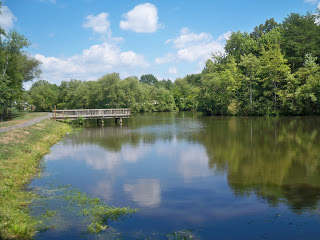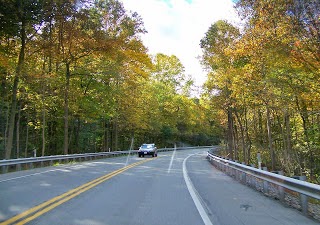Possibilities of Place

Since Sunday’s hike I’ve been doing a little research on the Cross-County Trail, Difficult Run and the watershed. I’ve learned about ongoing projects to manage the streams, to keep them healthy with drainage and tree buffers.
I’ve learned about the flooding that often occurs in the section I hiked a few days ago. Most of all, I’ve learned about the communities of runners, walkers and bikers who have traveled these trails before me.
I’ve read stories of single-day marathons, of Nordic pole-walkers, of runners wading waist-high across streams when the water tops the fair-weather crossings.
What these tales have in common is a sense of adventure and discovery. There is awe of the natural beauty, of the possibilities of this place.
